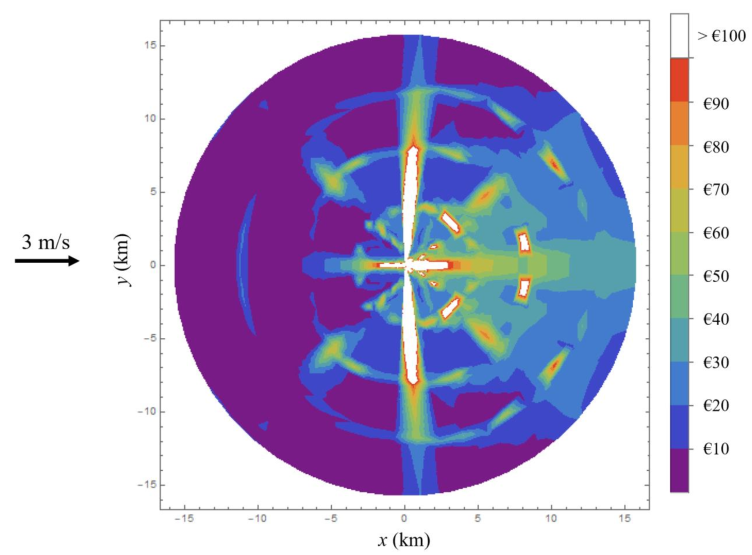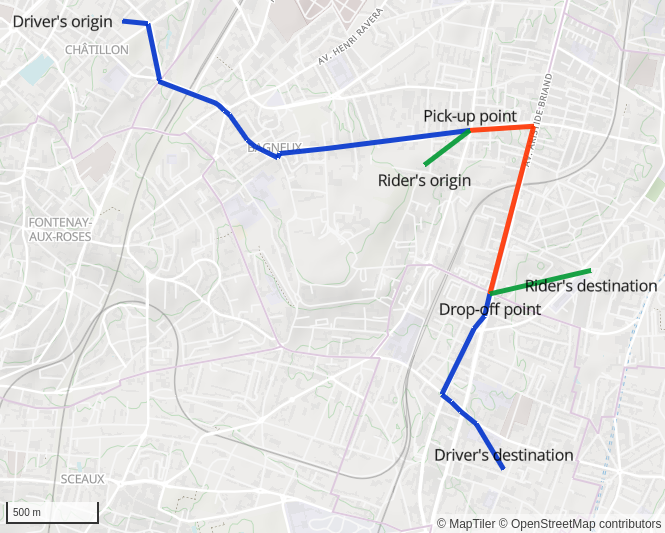Metropolis
André de Palma, Lucas Javaudin (CY Cergy Paris Université)
Société du Grand Paris – 2022-12-15
Basic Principle
- Metropolis is an iterative model
- At each iteration, four models are run successively (network skims computation, pre-day model, within-day model and day-to-day model)
- The simulation stops when a convergence criteria is met or when the maximum number of iterations is reached
Input of the Model
The input of Metropolis can be divided in three main categories:- Road network
- Population (list of agents and their characteristics)
- Simulation parameters
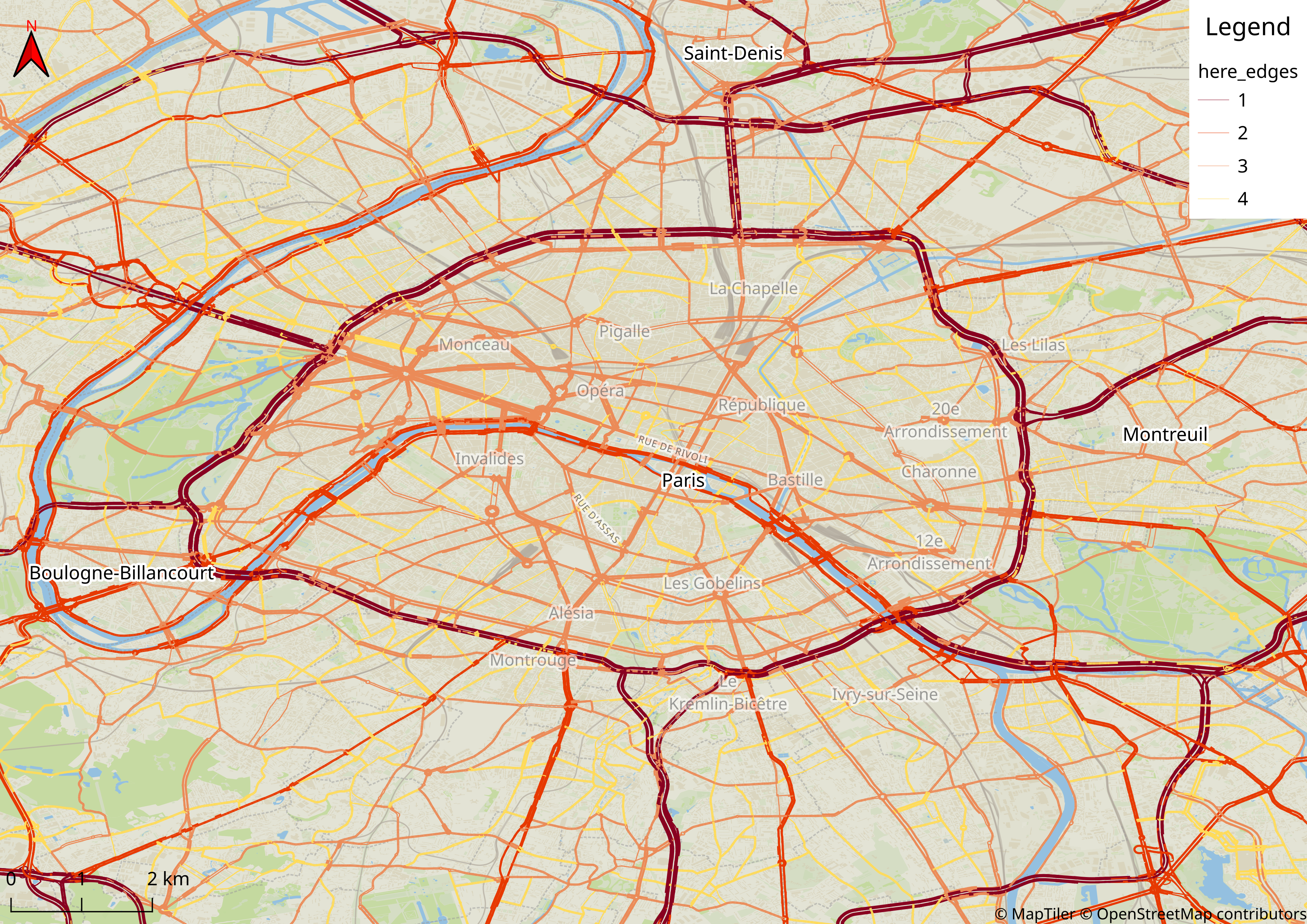
- Id: 11484148
- Purpose: Home to work
- Origin: 951270127 (Cergy – Justice-Heuruelles)
- Destination: 930661102 (Saint-Denis – Plaine 02)
- Age: 39
- Sex: male
- Employed: Yes
- Socioprofessional class: 3 (executive)
- Driving license: Yes
- Monthly household income: 3369 €
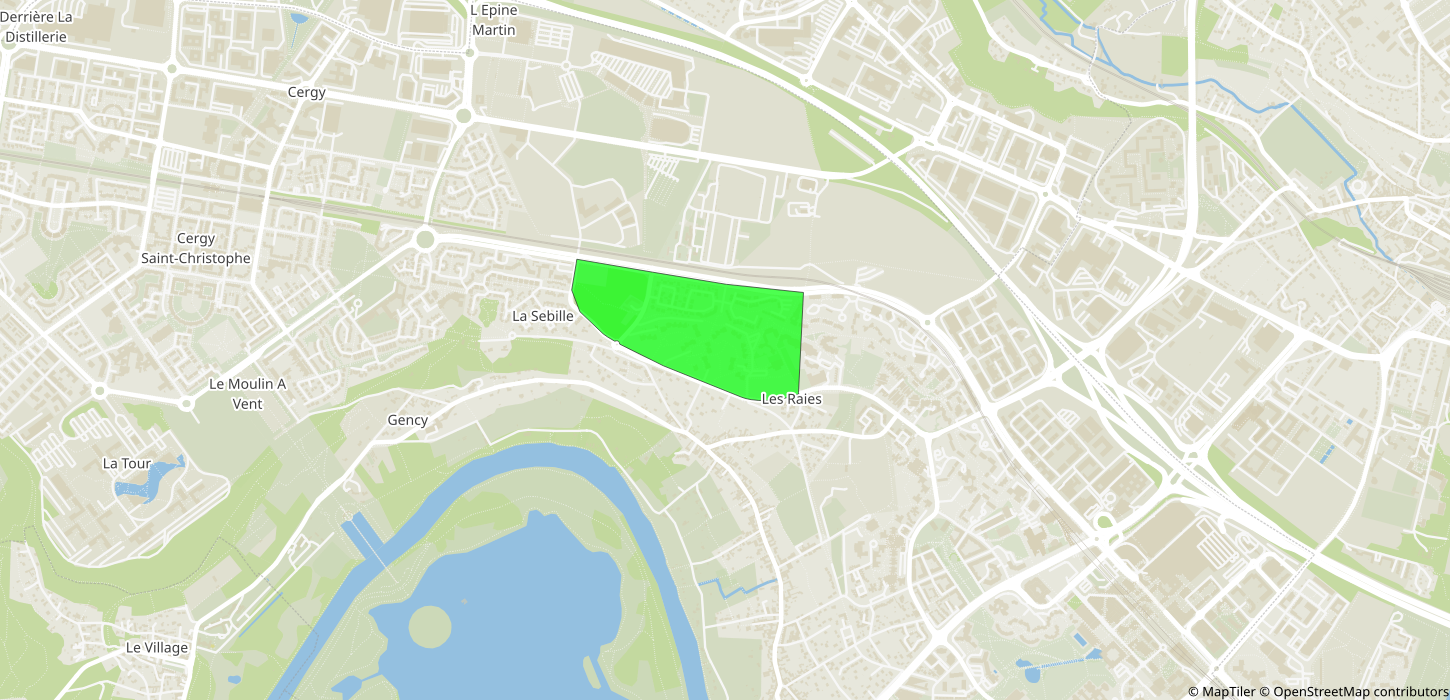
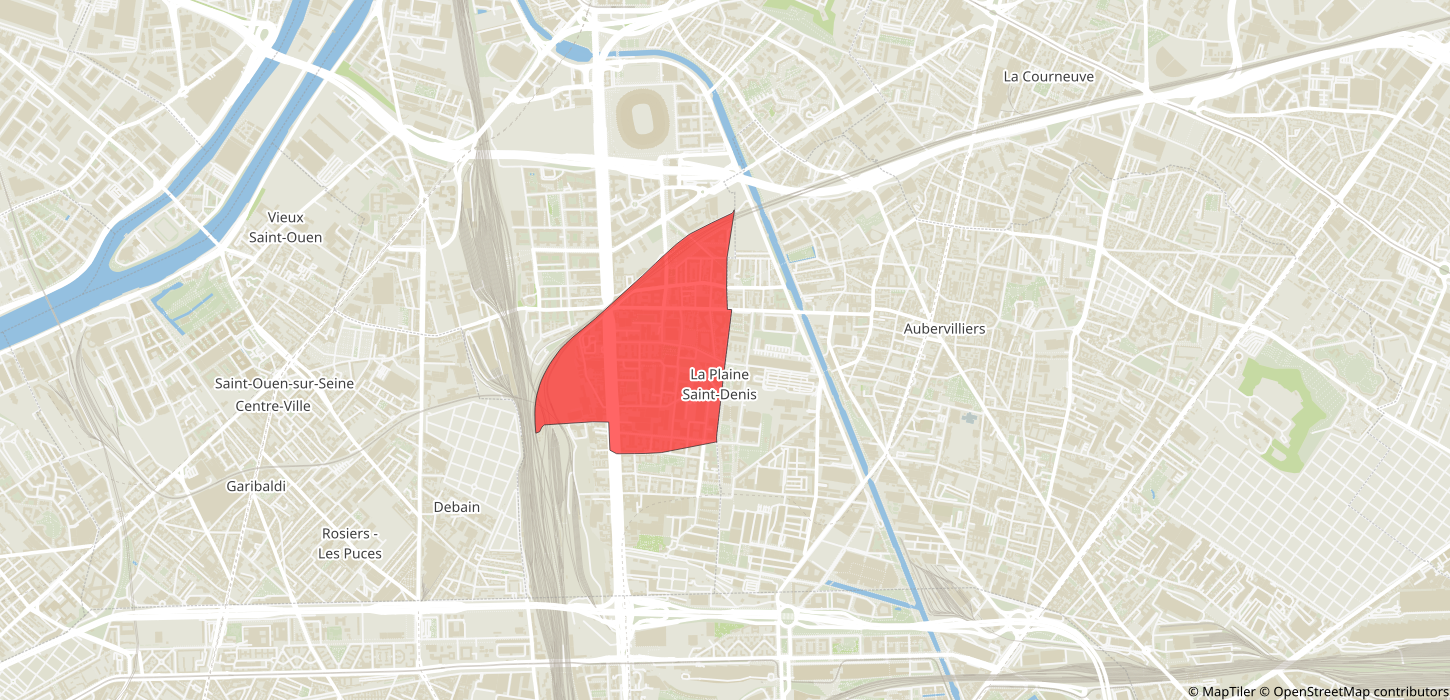
Output of the Model
The output of Metropolis can be divided in four main categories:- Aggregate results (e.g., mean travel time, surplus)
- Agent-specific results
- Congestion on each road
- Origin-destination travel times
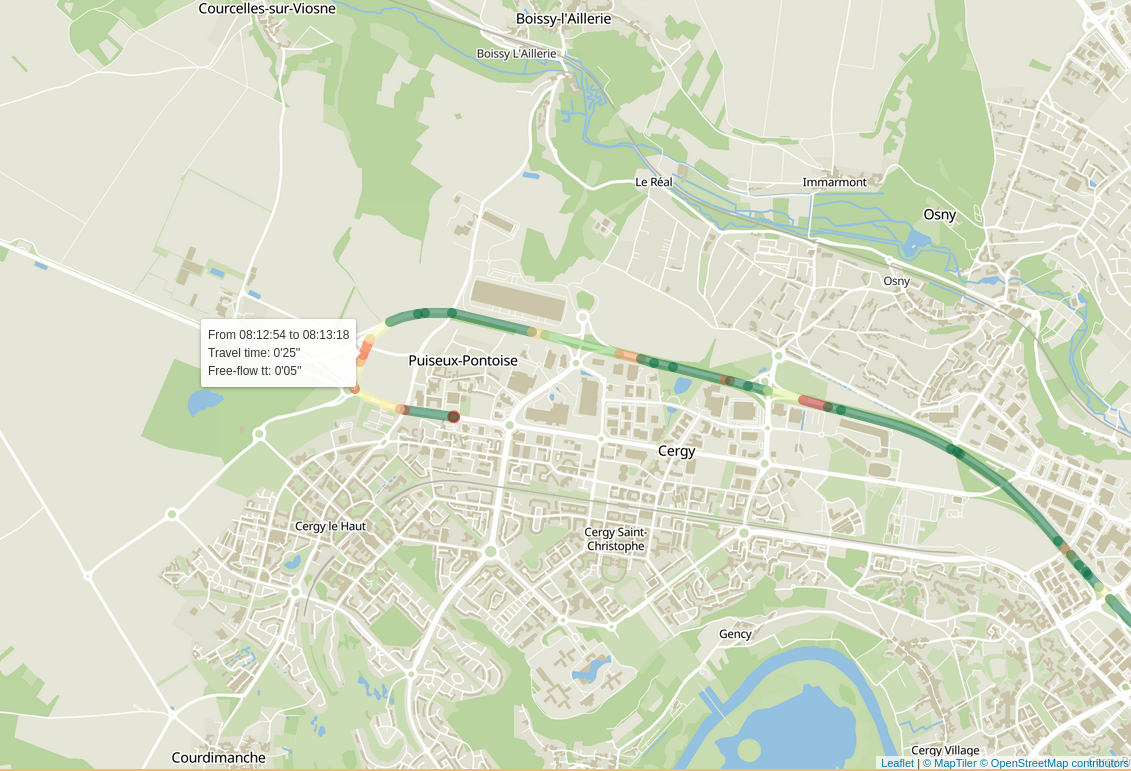
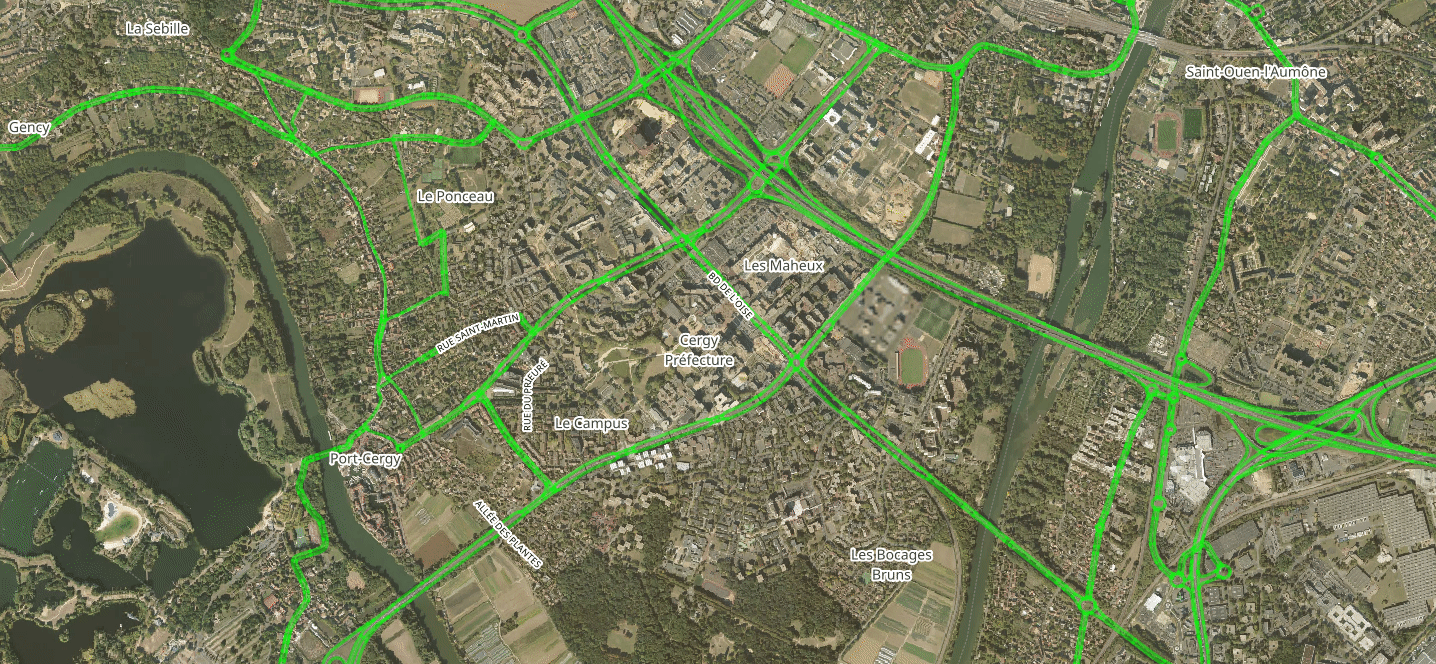
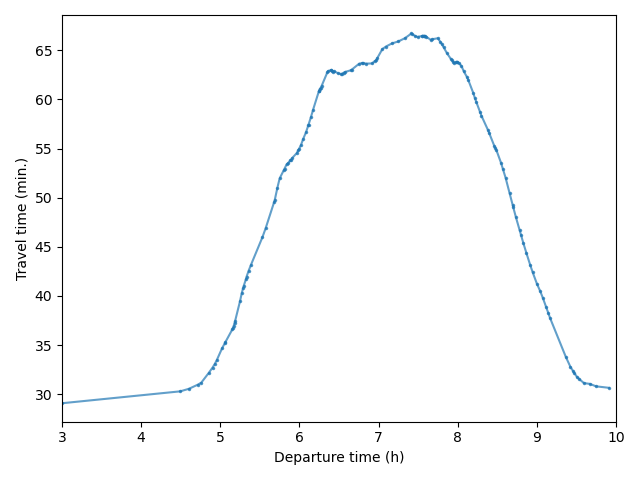
Other Transport Simulators
-
Macroscopic 4-step models:
- MODUS (DRIEAT)
- Antonin (Île-de-France Mobilités)
- GLOBAL (RATP)
-
Agent-based models:
- MATSim
- SimMobility (MIT)
- Emme (INRO)
- Visum (PTV)
Application: Île-de-France
Introduction
- What? First large-scale application of Metropolis v2, on Île-de-France
- Goal? Show the capabilities of Metropolis v2 (in particular, for calibration)
- Scope? Trips by car, morning peak hour
Input: Road network
- Source: HERE
- Roads with functional class 1 to 4 are selected (i.e., less important roads are removed)
- 177 152 nodes and 308 027 edges


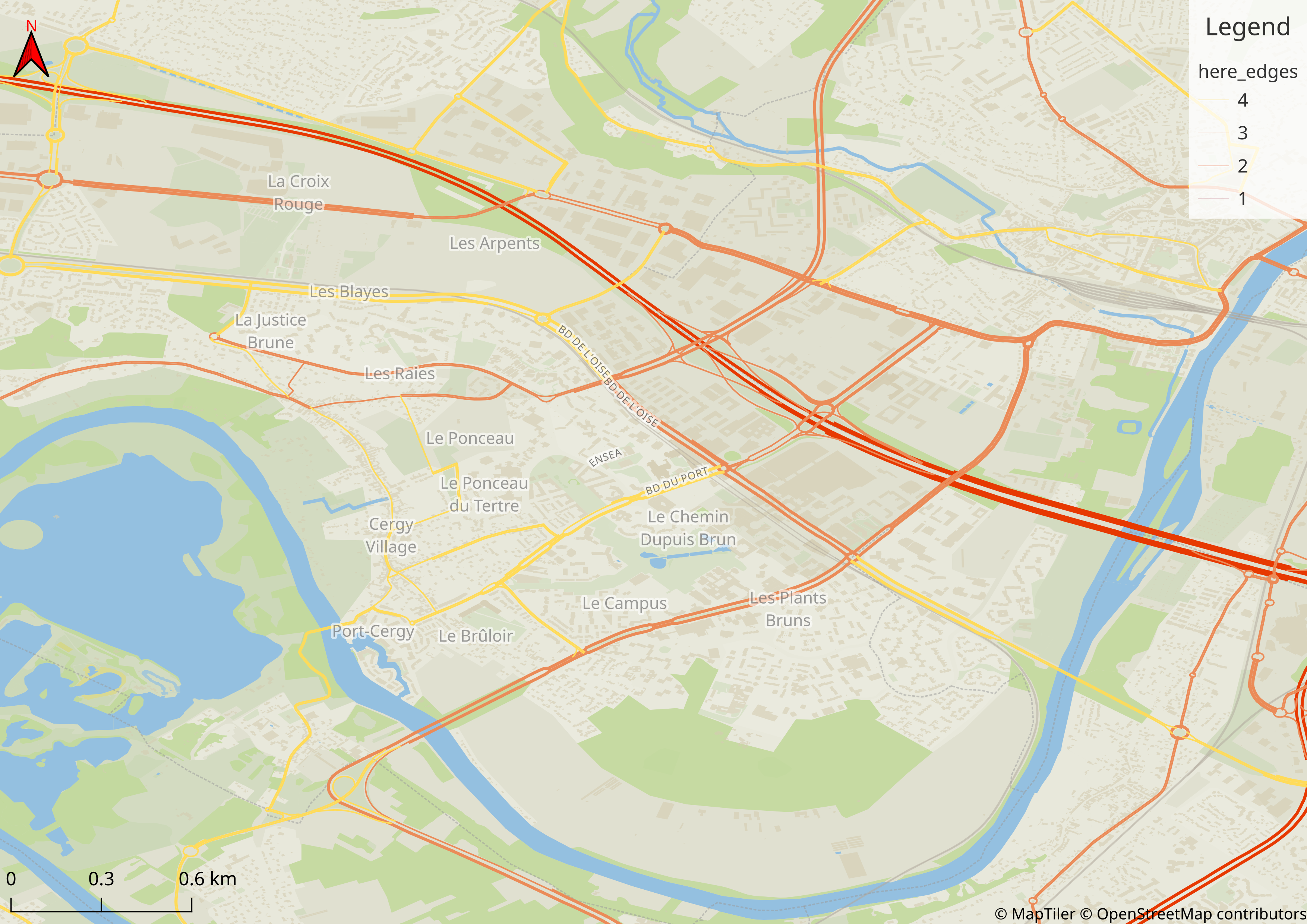
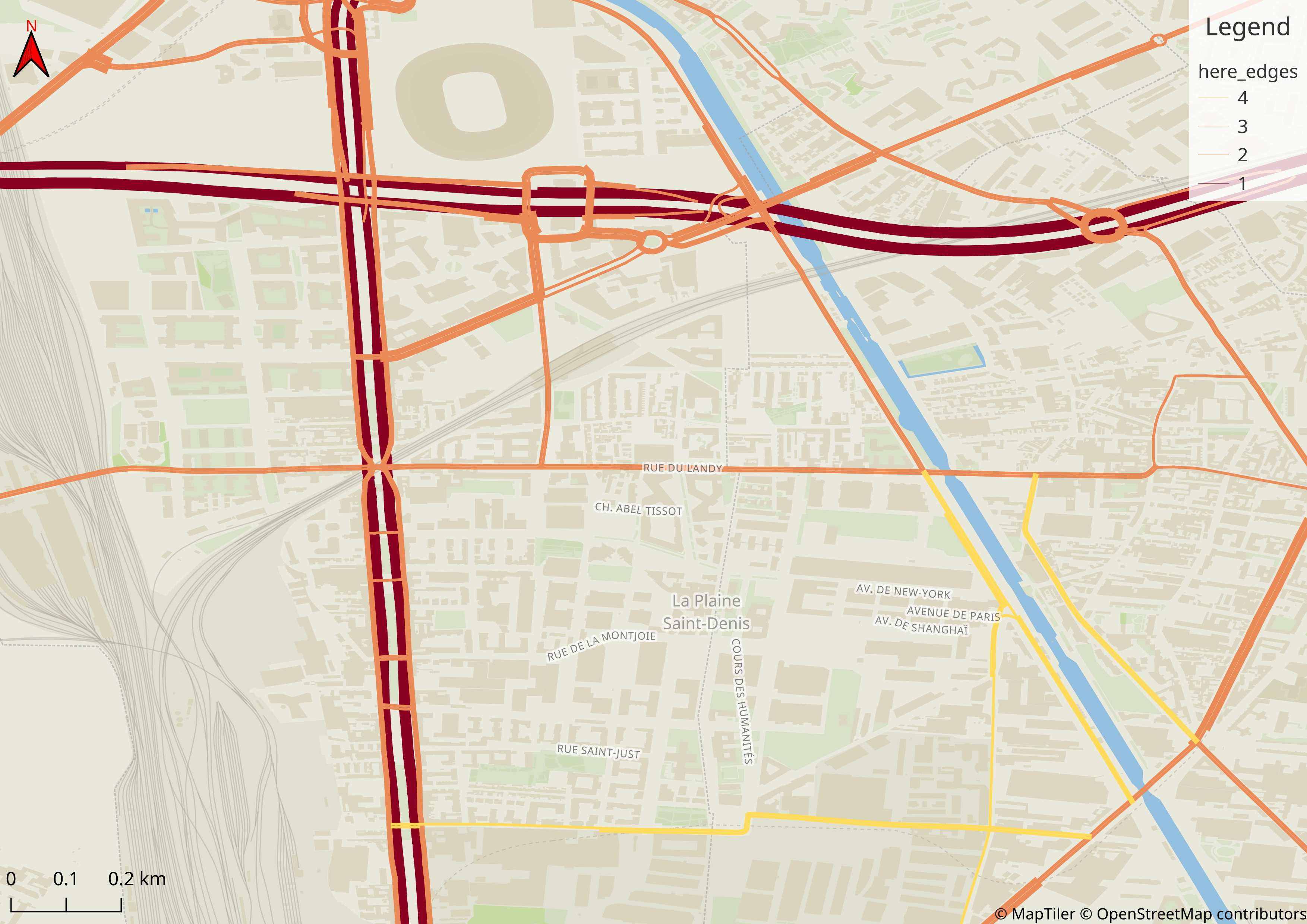
Input: Zones
- The origin and destination of the trips is aggregated at the IRIS zone level
- IRIS zones: created by INSEE, homogeneous buildings, population of around 2000 inhabitants
- 5265 IRIS zones in Île-de-France
- 992 IRIS zones in Paris
- Zone area: 2.292 km2 (mean), 0.330 km2 (median)
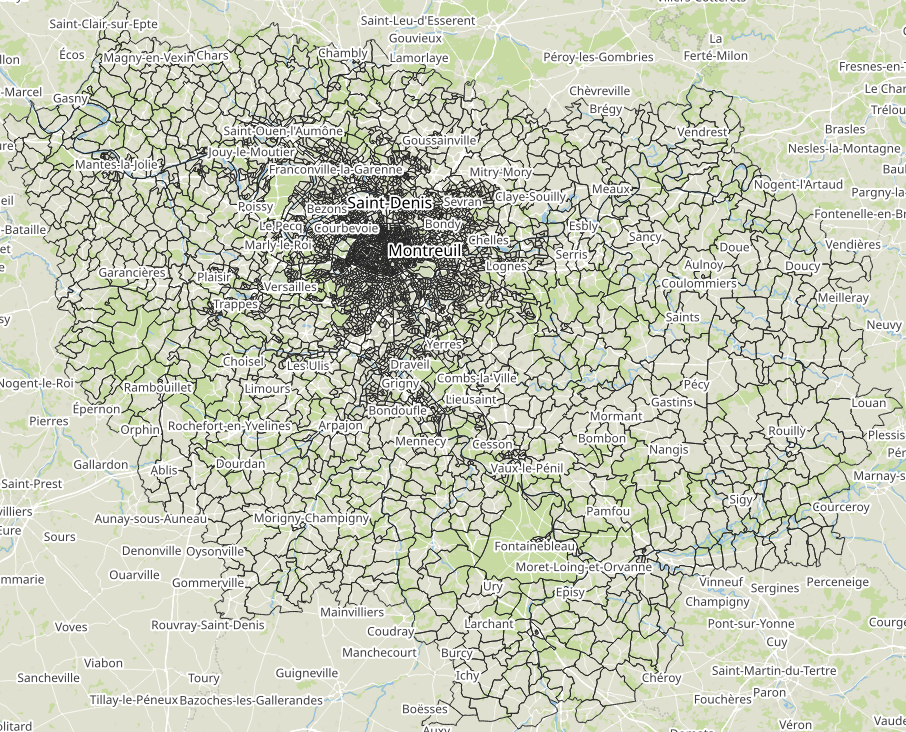

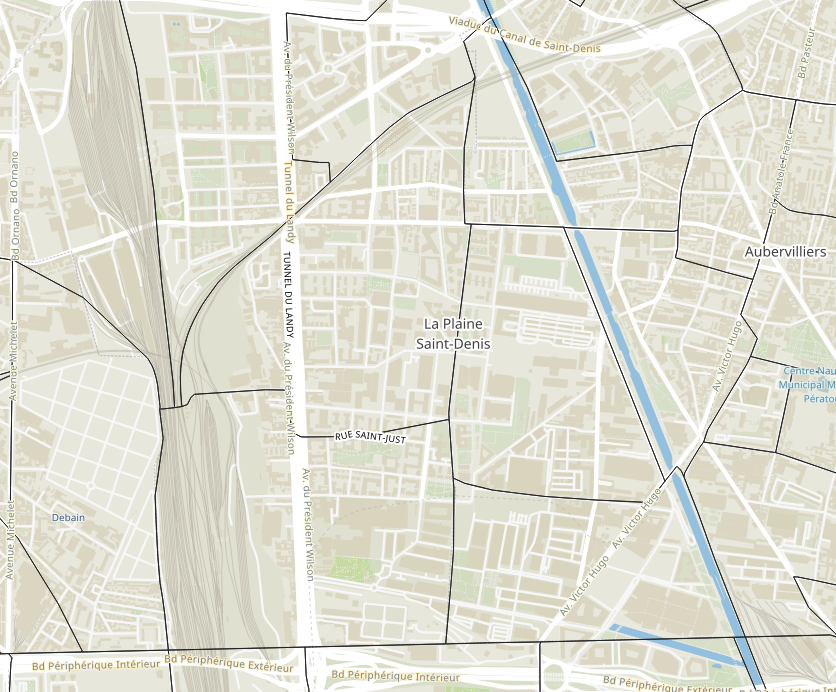
Input: Connectors
- Zones are connected to the road network through virtual roads, called connectors
- A virtual node can have up to 4 connectors, in each direction (incoming and outgoing)
- Connectors have 1 lane and a speed limit of 30 km/h
- Average travel time on connectors is 76 seconds
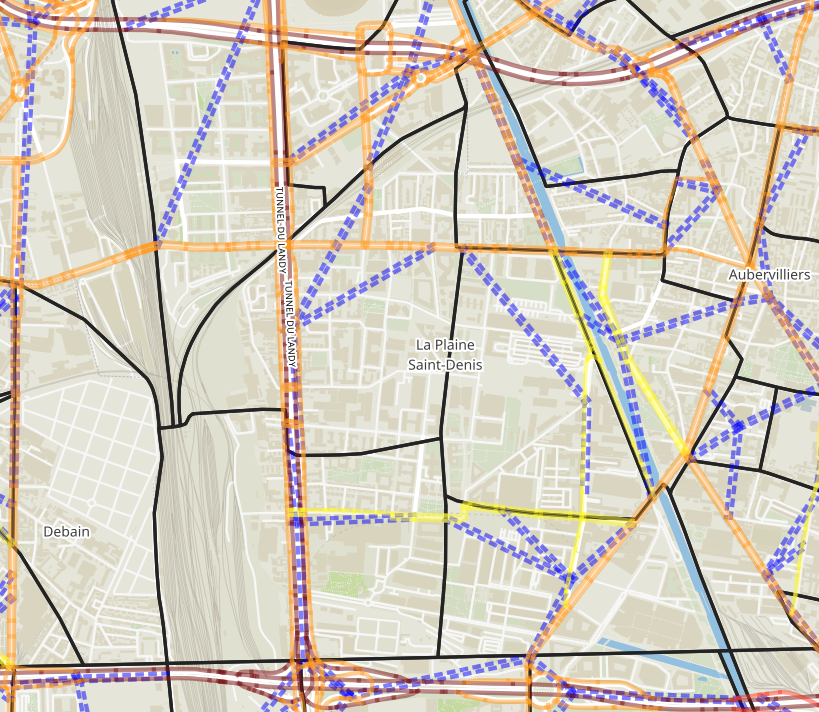
Data: Population
- Trips are generated by combining many sources (INSEE census, travel survey, buildings data, etc.)
- Filters: trips by car, from 3AM to 10AM, different origin and destination
- Preference parameters chosen from the literature
- 185 572 trips are simulated (simulation is scaled down to 10 %)
Hörl, S. and Balac, M., 2021. Synthetic population and travel demand for Paris and Île-de-France based on open and publicly available data. Transportation Research Part C: Emerging Technologies, 130, p.103291.
Trips to IRIS 930661102 (Saint-Denis - Plaine 02)
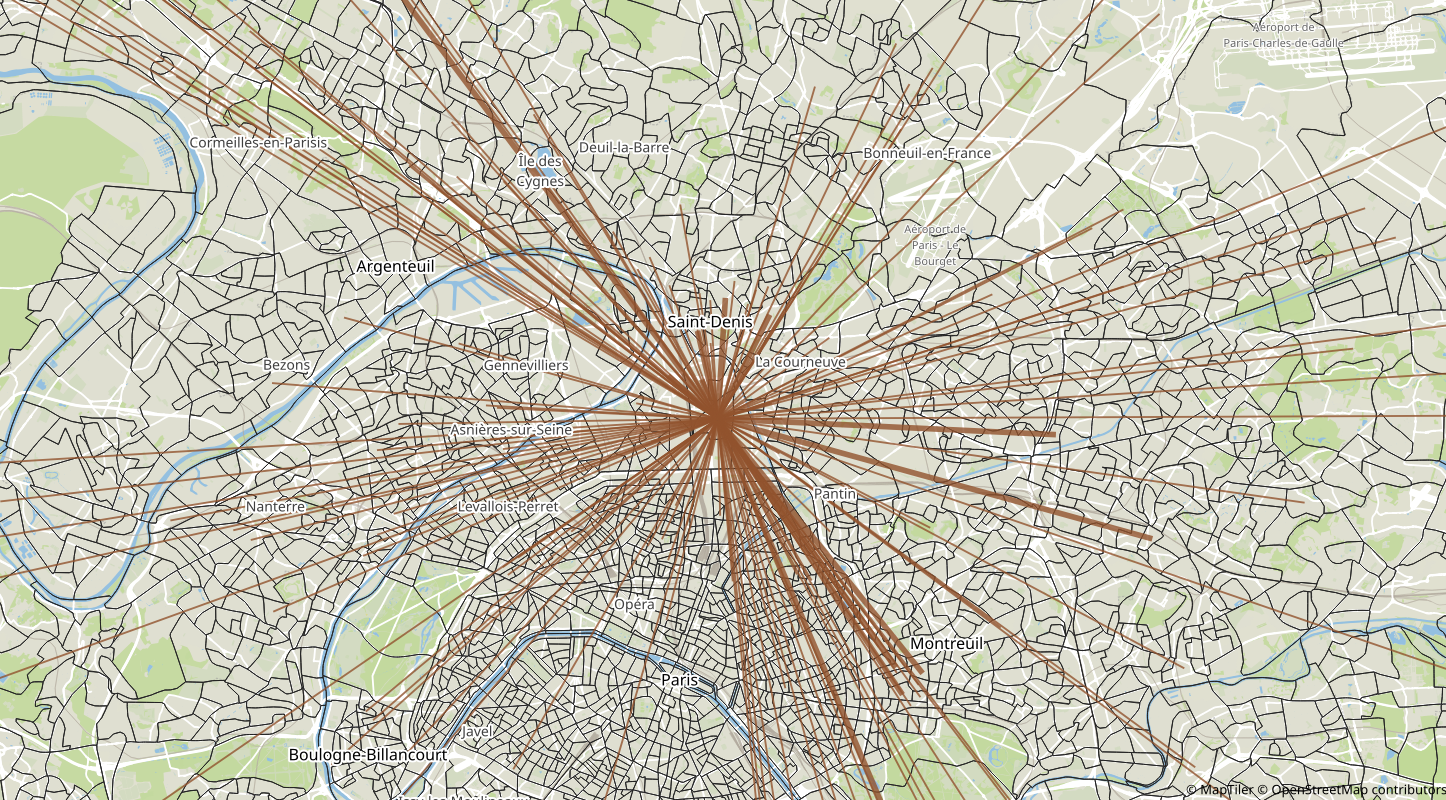
Trips from IRIS 930661102 (Saint-Denis - Plaine 02)
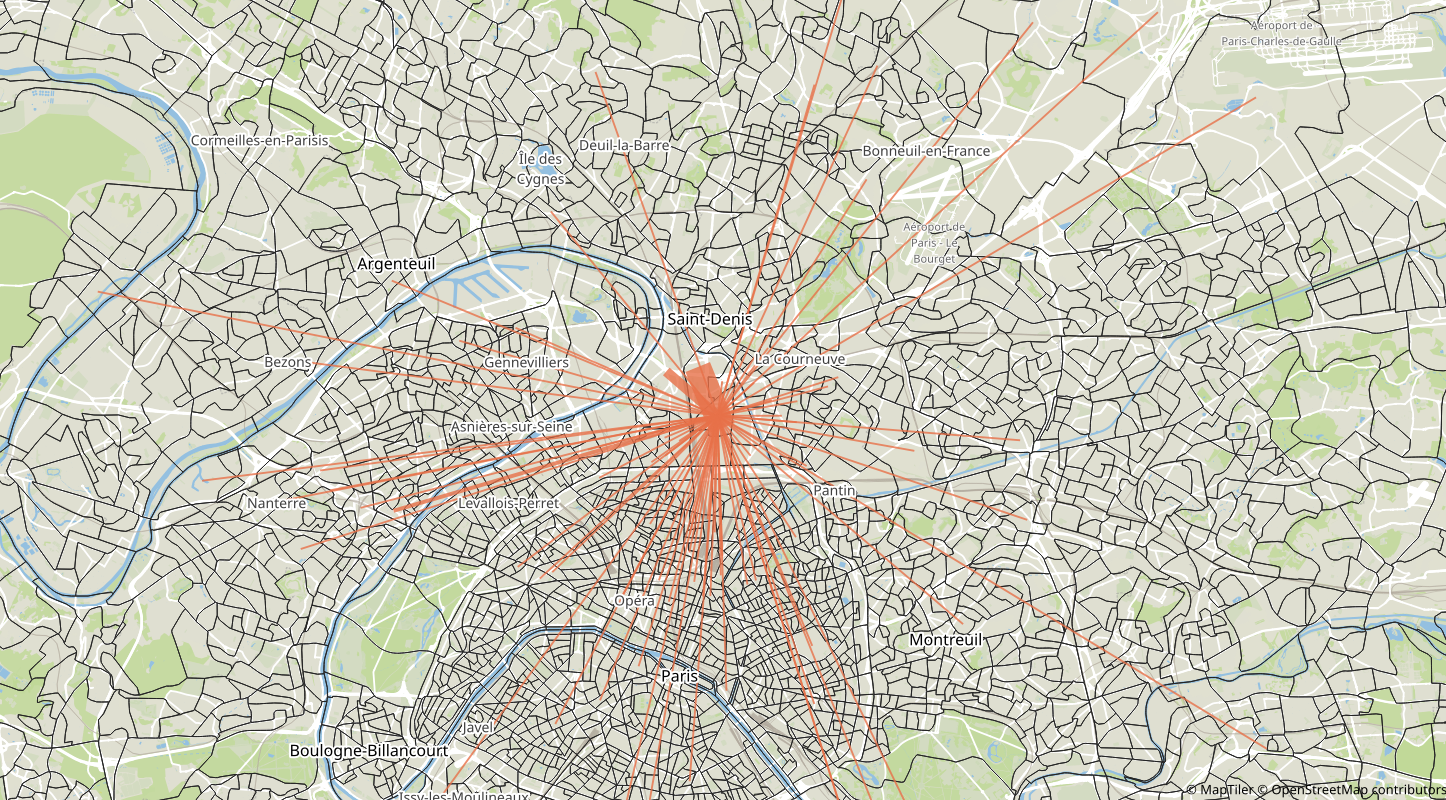
Running Metropolis
- Network skims computation: computes origin-destination travel times given edges' travel times
- Pre-day model: computes agents' mode, departure time and route choice
- Within-day model: simulates congestion
- Day-to-day model: computes expected edges' travel times given observed congestion
Network skims computation
- Input: edges' travel-time functions
- Algorithm: Time-dependent contraction hierarchies
- Output: origin-destination travel-time functions
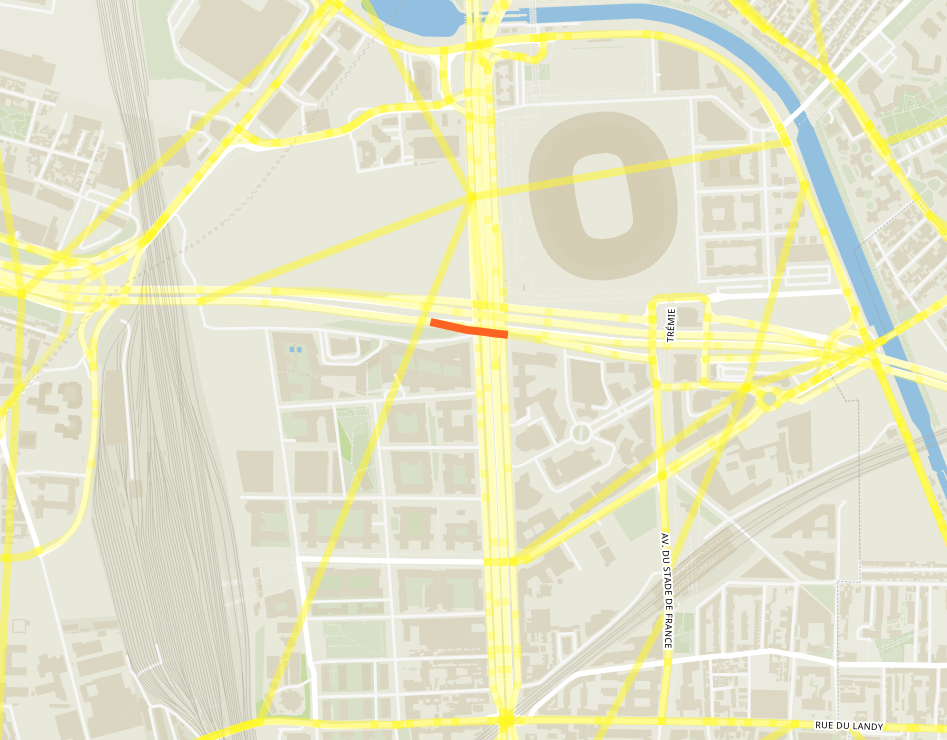
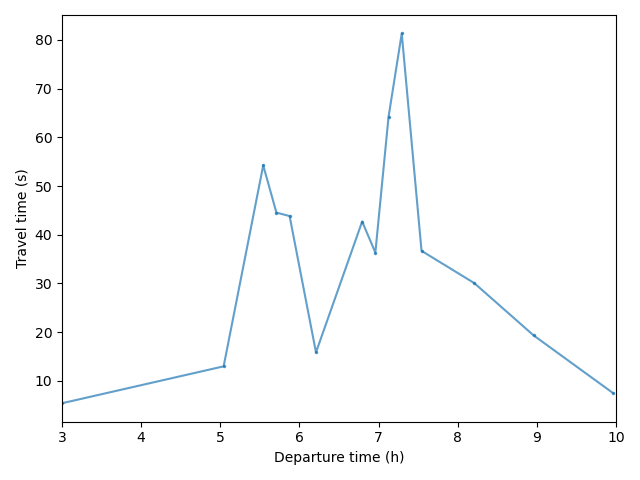
Geisberger, R. and Sanders, P., 2010. Engineering time-dependent
many-to-many shortest paths computation. In
10th Workshop on Algorithmic Approaches for Transportation
Modelling, Optimization, and Systems (ATMOS'10). Schloss Dagstuhl-Leibniz-Zentrum fuer Informatik.
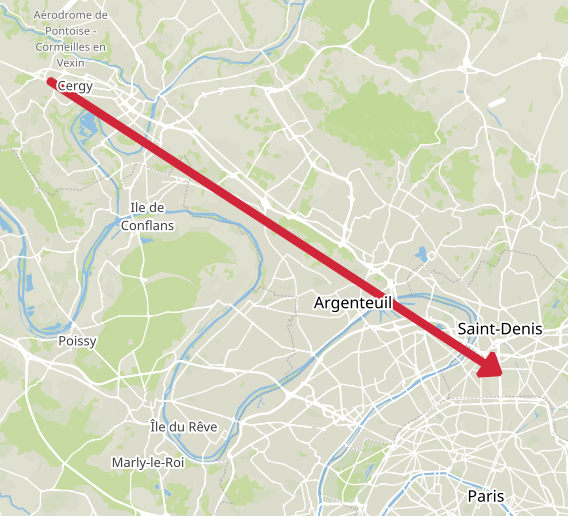

Pre-Day Model
- Input: agents' characteristics and origin-destination travel-time functions
- Step 1: Compute generalized costs
- Step 2: Find chosen departure time (Continuous Logit Model)
- Step 3: Find chosen route (fastest path given departure time)
- Origin: 951270127 (Cergy – Justice-Heuruelles)
- Destination: 930661102 (Saint-Denis – Plaine 02)
- Value of time: 15 € / h
- Early penalty: 7.5 € / h
- Late penalty: 30 € / h
- Desired arrival time: 09:15

\[ c(t_d, t_a) = \underbrace{\alpha \cdot (t_a - t_d)}_{\text{travel cost}} + \underbrace{\beta \cdot [t^* - t_a]_+ + \gamma \cdot [t_a - t^*]_+}_{\text{schedule-delay cost}} \]
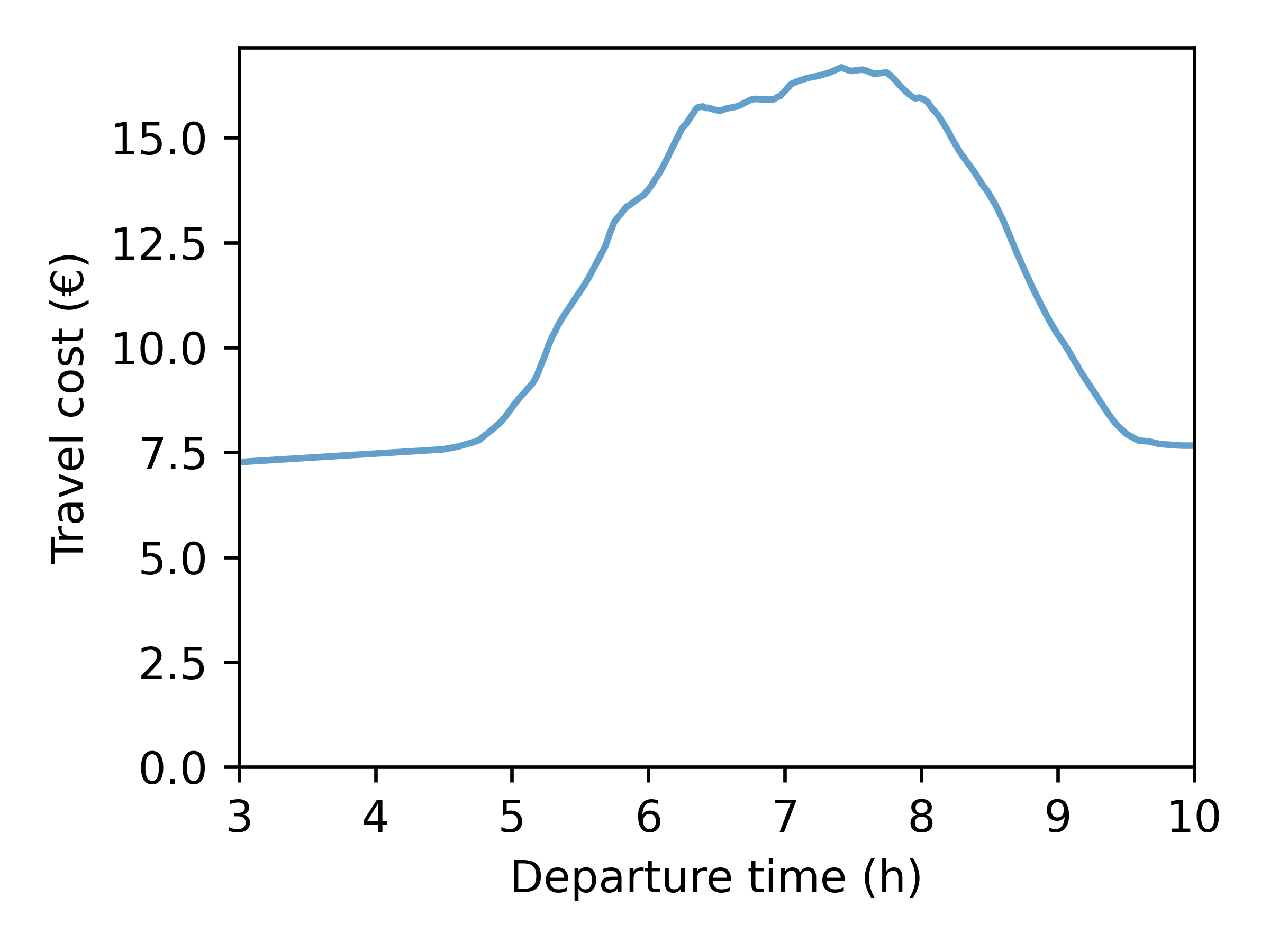
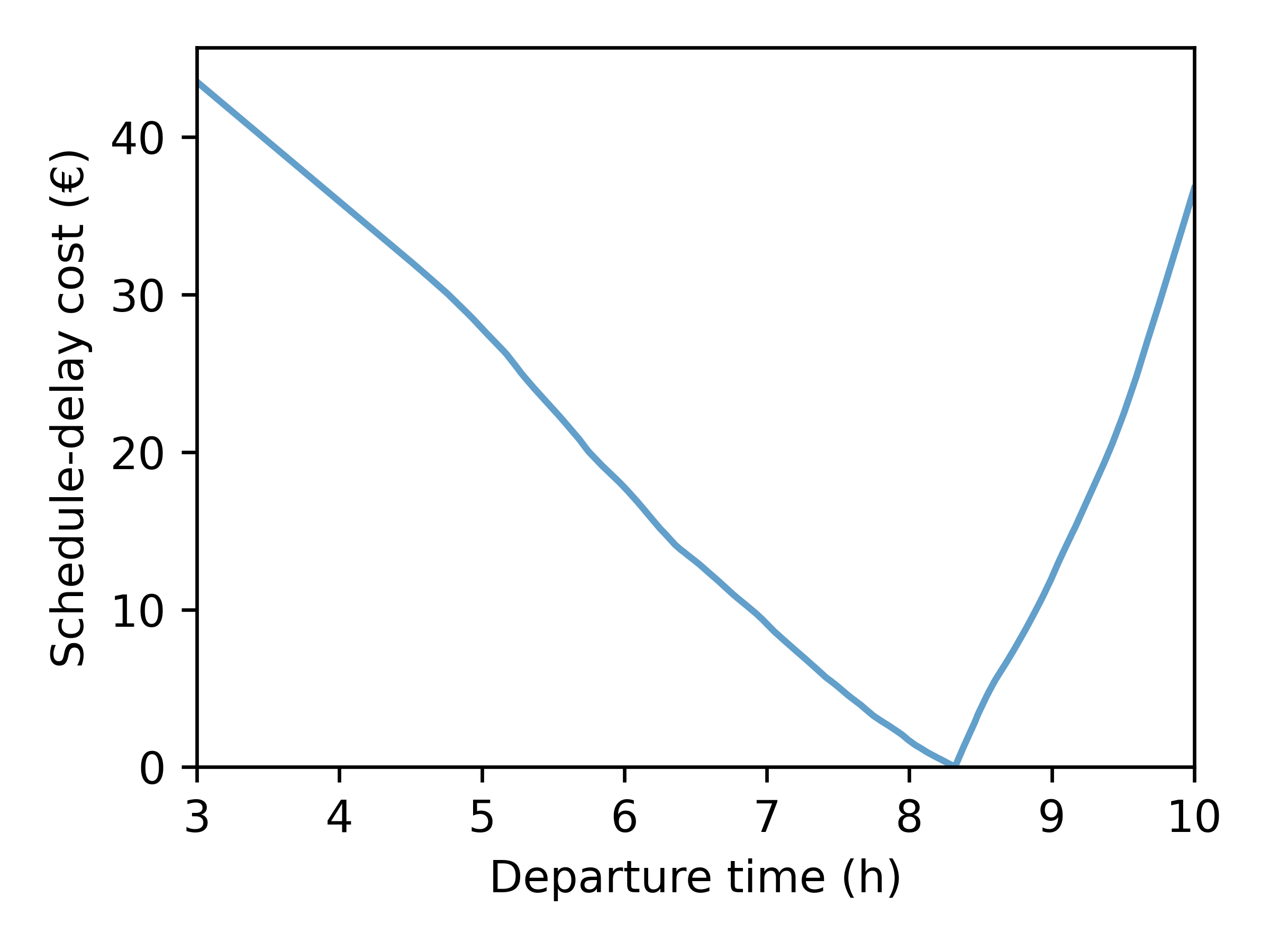
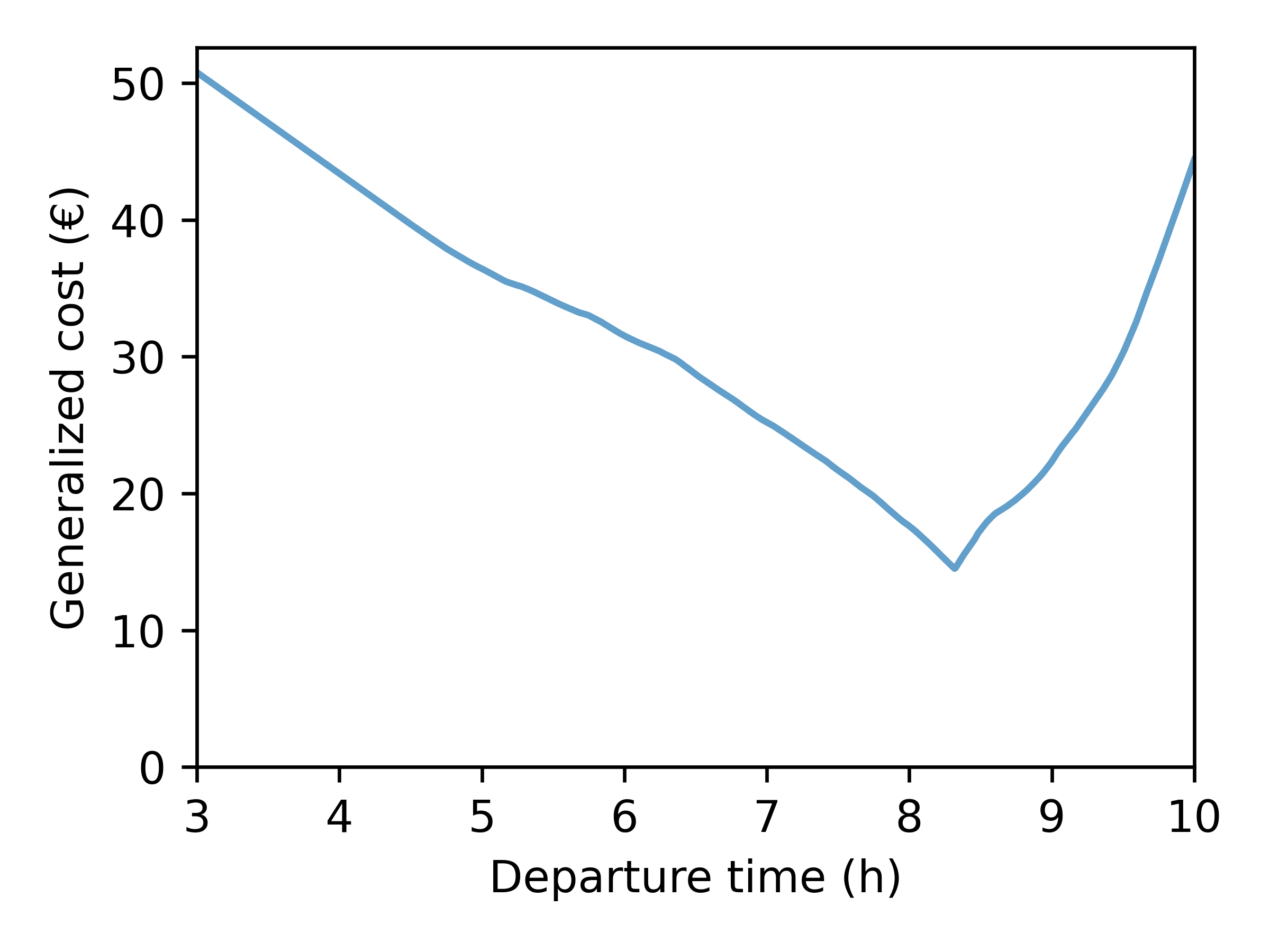

+

=

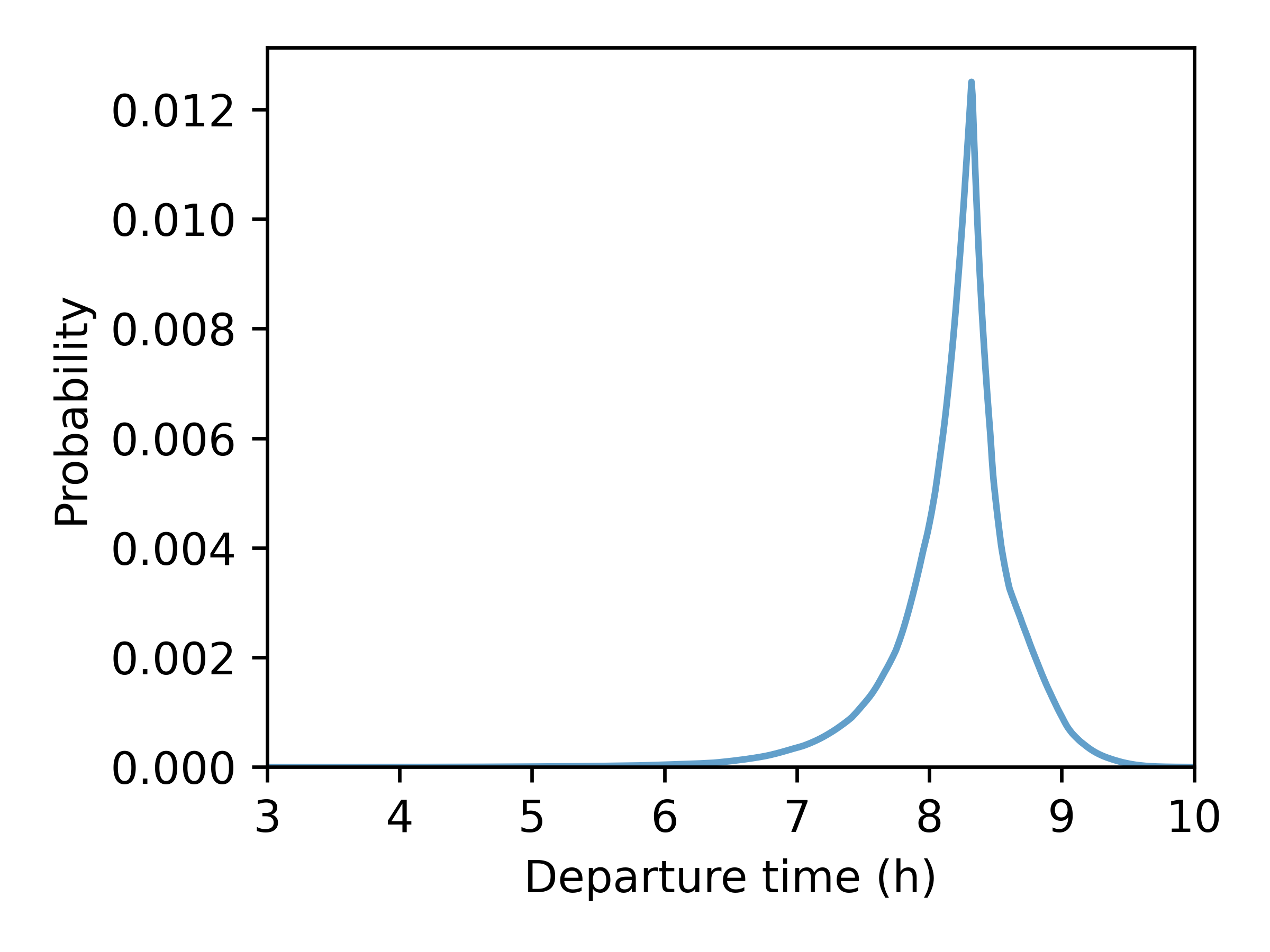
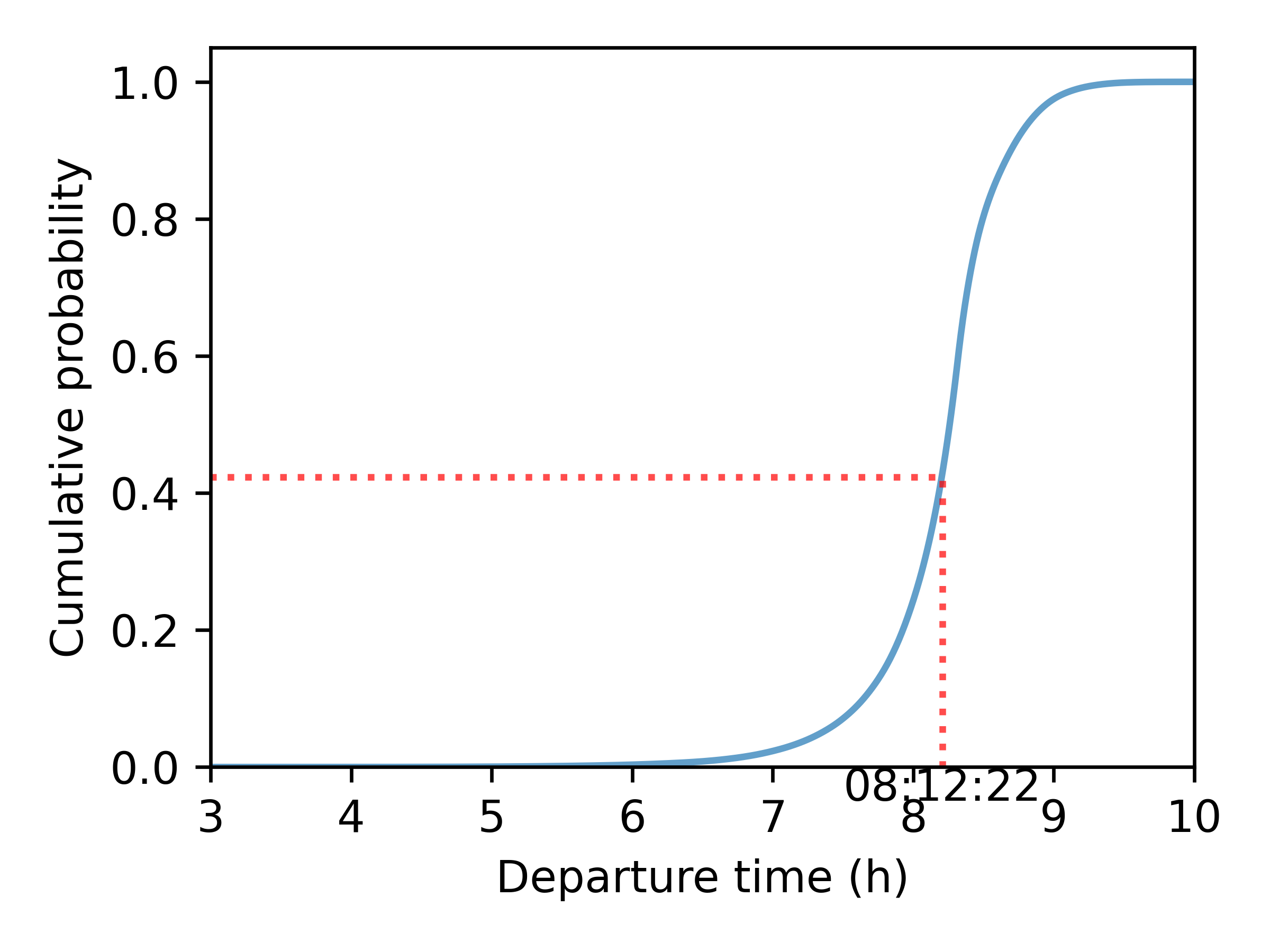
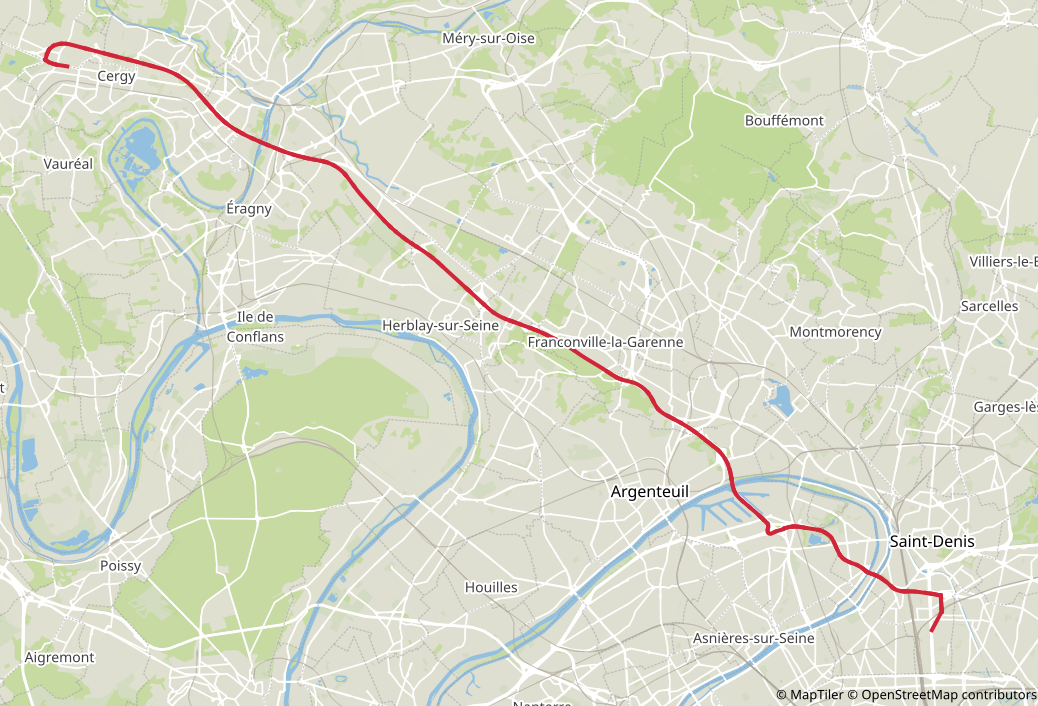

Within-Day Model
- Input: Chosen mode, departure time and route of each agent
- Agents' actions are simulated in a chronological order
- Congestion is simulated with speed-density functions and bottlenecks
- Output: Edges' travel-time functions
| Time | Event |
|---|---|
| 03:00:03 | Agent 91735 leaves origin through edge 317770 |
| 03:00:11 | Agent 111697 leaves origin through edge 161026 |
| 03:00:11 | Agent 157315 leaves origin through edge 99613 |
| 03:00:18 | Agent 134340 leaves origin through edge 68763 |
| 03:00:21 | Agent 152934 leaves origin through edge 137501 |
| 03:00:31 | Agent 43475 leaves origin through edge 16265 |
| 03:00:34 | Agent 111697 takes edge 161020 |
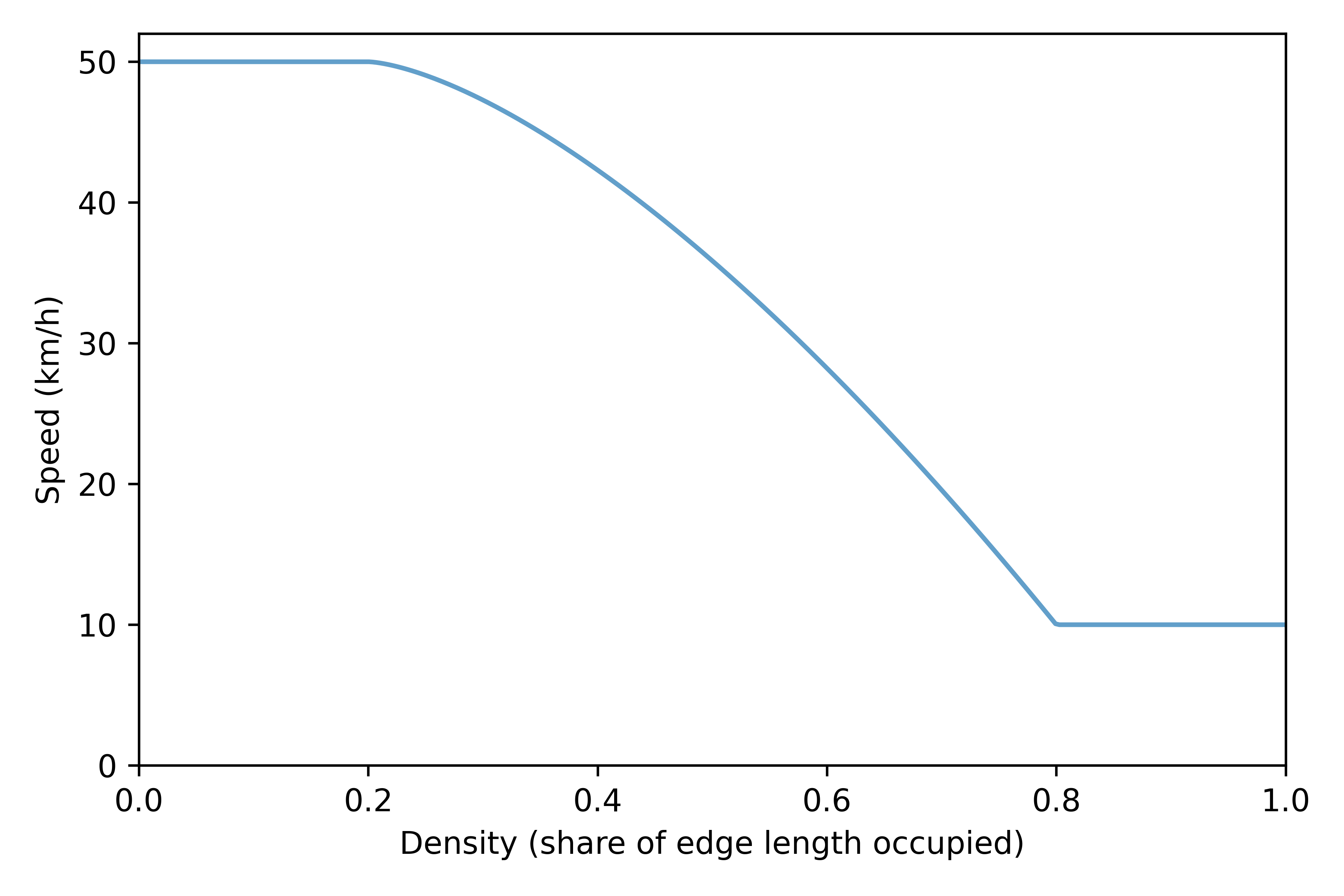




Day-to-Day Model
- Input: Expected and simulated edges' travel-time functions
- Learning process based on Markov decision processes
- Stop the simulation if a stopping criteria is reached (e.g., maximum number of iterations, difference between expected and simulated travel times)
- Output: Expected edges' travel-time functions for next iteration
\[ {tt}^e_{\tau + 1} = \lambda \cdot {tt}^e_{\tau} + (1 - \lambda) \cdot {tt}^s_{\tau} \]
Calibration (1/2)
Travel time penalties at intersections are calibrated to match travel time distribution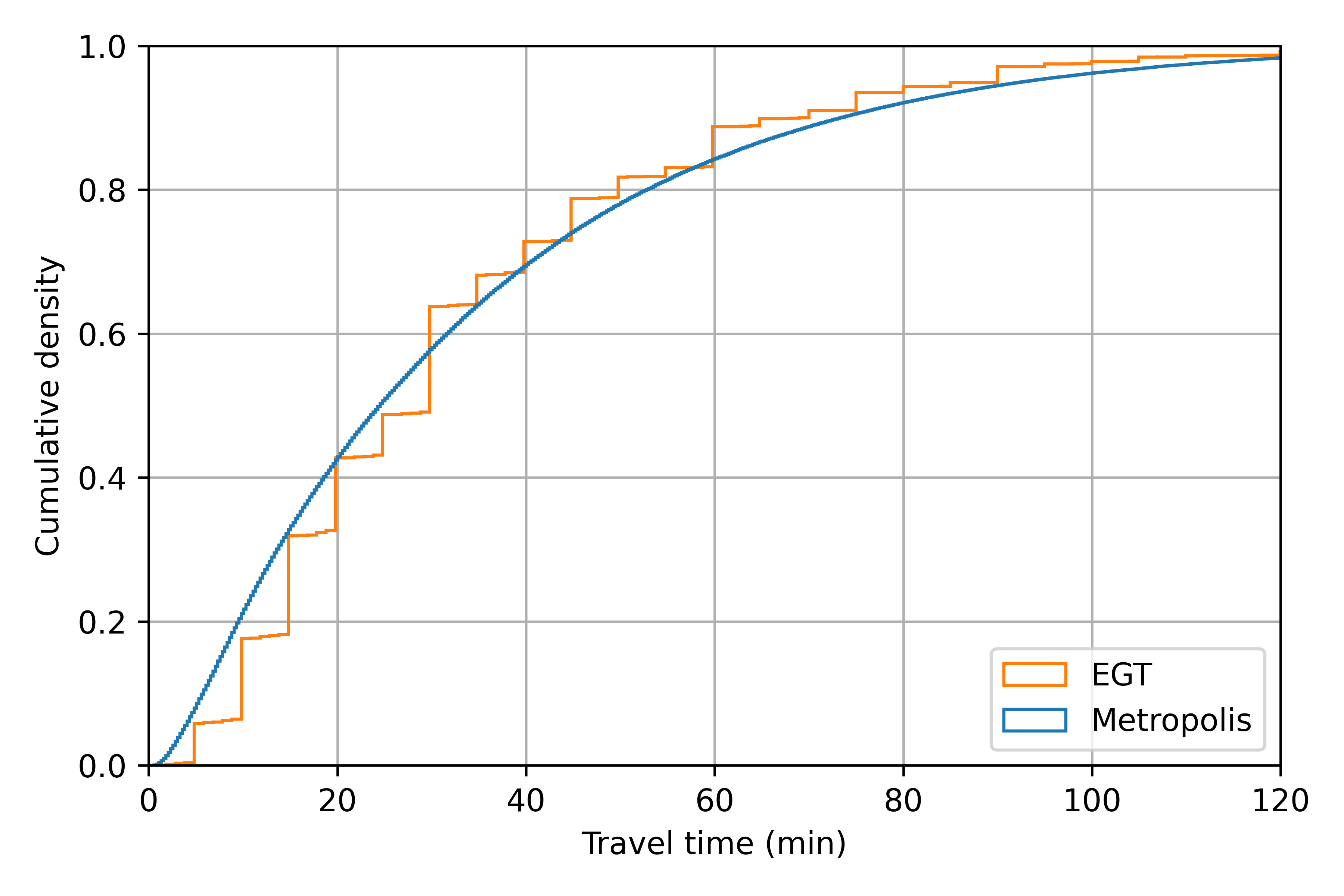
Calibration (2/2)
Distribution of desired arrival times is calibrated to match arrival time distribution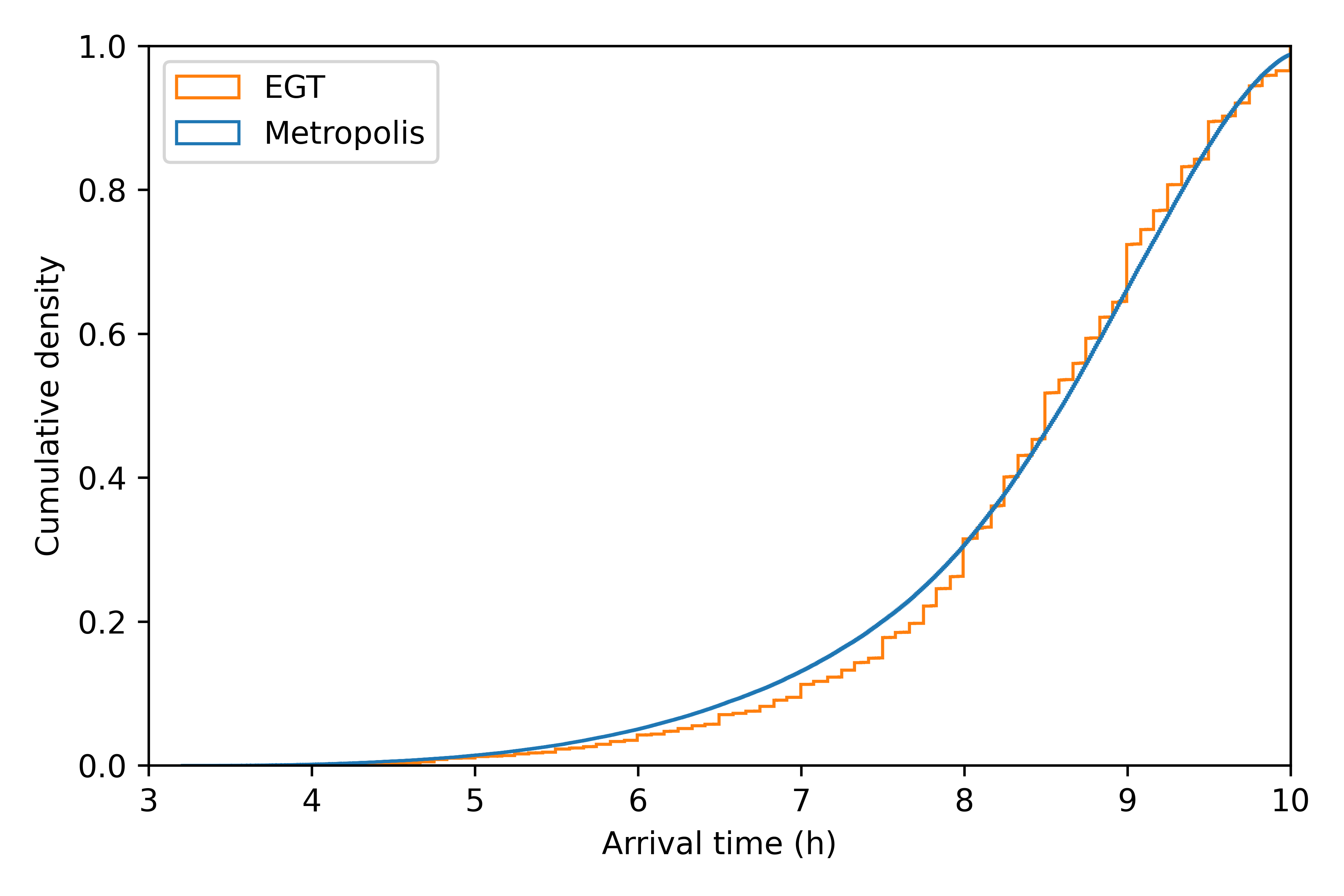
Aggregate Results
All values are averages over agents.| Value | Metropolis | EGT |
|---|---|---|
| Departure time | 07:48:07 | 07:50:21 |
| Arrival time | 08:21:24 | 08:23:49 |
| Travel time | 00:33:17 | 00:33:28 |
| Free-flow travel time | 00:22:37 | |
| Distance | 14.803 km | |
| Departure-time shift* | 2 seconds | |
| Surplus | 15.55 € | |
| Free-flow surplus | 18.56 € |
Cost of congestion: 3.01 €
* Absolute difference between departure time from one iteration to another
Disaggregate Results: Agents' Trip
- Id: 11484148
- Departure time: 08:10:06
- Arrival time: 09:35:31
- Travel time: 01:25:25
- Generalized cost: 30.52 €


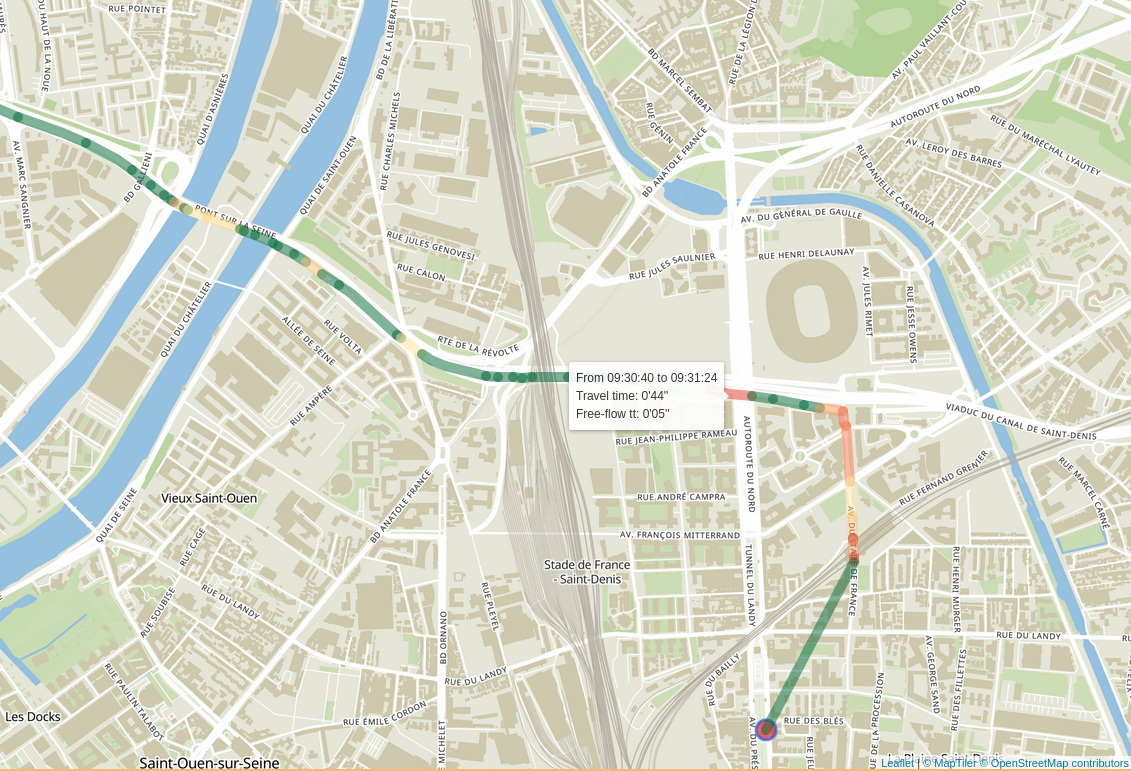
Disaggregate Results: Road Congestion

Disaggregate Results: Origin-Destination Travel Time Functions


Example Policy
- Basic policy scenario: 20 % of agents are removed randomly
- Interpretation: shift to public transit or carpooling; increasing telecommute
| Value | Baseline | Policy | Change |
|---|---|---|---|
| Departure time | 07:48:07 | 07:53:18 | + 5'11'' |
| Arrival time | 08:21:24 | 08:22:57 | + 1'33'' |
| Travel time | 00:33:17 | 00:29:39 | - 3'38'' |
| Distance | 14.803 km | 14.900 km | + 97m |
| Surplus | 15.55 € | 16.59 € | + 1.04 € |
Conclusion and Future Works
Public Transit
-
Differences compared to private transport:
- Number of transfers, walking time, in-vehicle congestion and reliability have to be considered, in addition to travel time
- Departure-time choice is a discrete choice (as opposed to continuous)
-
Objectives for next year:
- Departure-time and route (= lines) choice
- Generalized cost includes walking time, waiting time, mode-specific times (bus, subway, etc.) and in-vehicle congestion
- Sitting is modeled explicitly
Future improvements
- Road maintenance (Ravi Seshadri)
- Automatic computation of air pollution (Romuald le Frioux)
- Ride-sharing (Samarth Ghoslya)
